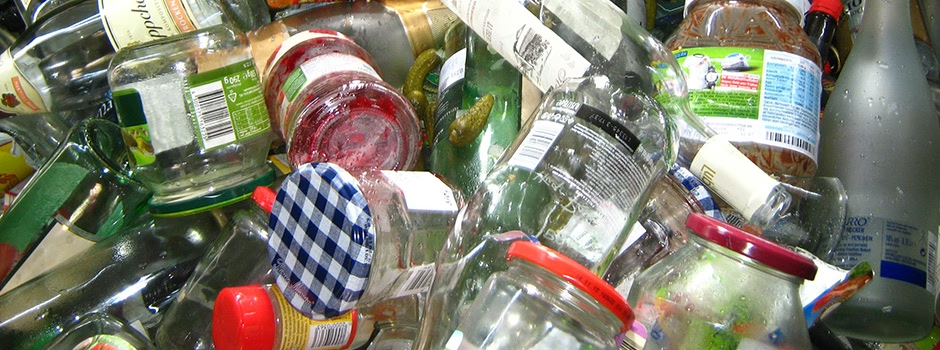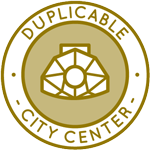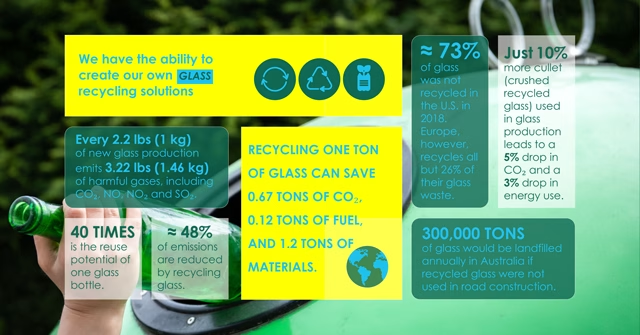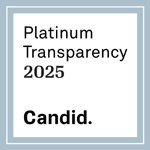
Best Small and Large-scale Community Glass Recycling, Repurposing, and Reuse Options
Glass is a very important material that is used globally for bottles, jars, mobile phones, glasses, etc. It is important to have an effective solution to deal with any glass waste that is produced so that we can reduce our carbon footprint, energy usage, and overall environmental impact. Depending on your situation, glass can be recycled in several different ways. These include sending it to a recycling center, melting it yourself and then molding it to a new shape, or crushing glass into small pieces and then using these pieces elsewhere. This chapter covers all these options and more with the following sections:
- What is Glass Recycling, Reuse, and Repurposing
- Why Open Source Glass Recycling, Reuse, and Repurposing
- Ways to Contribute and Consultants
- Glass Recycling Details
- Resources
- Summary
- FAQ
RELATED PAGES (Click icons for complete pages)









WHAT IS GLASS RECYCLING,
REUSE, & REPURPOSING
 A simple definition of glass recycling is the reprocessing of used glass to form new glass 1. The glass that is crushed and ready to be remelted is called cullet. Glass can also be recycled through crushing and integration into roadway materials or reprocessing into foam glass. Glass bottles can also be cleaned and reused and repurposed. We will share here what One Community learned researching glass recycling and what we determined will be the best plan for 100% recycling of all our glass as part of self-sufficient and self-sustainable teacher/demonstration communities, villages, and cities for The Highest Good of All.
A simple definition of glass recycling is the reprocessing of used glass to form new glass 1. The glass that is crushed and ready to be remelted is called cullet. Glass can also be recycled through crushing and integration into roadway materials or reprocessing into foam glass. Glass bottles can also be cleaned and reused and repurposed. We will share here what One Community learned researching glass recycling and what we determined will be the best plan for 100% recycling of all our glass as part of self-sufficient and self-sustainable teacher/demonstration communities, villages, and cities for The Highest Good of All.
WHY OPEN SOURCE
GLASS RECYCLING, REUSE, & REPURPOSING
 One Community is working to create global sustainability and we see a consumer-driven effort to recycle more glass as helpful. We have researched the best small-scale recycling, repurposing, and reuse options for glass so we can implement these as part of the first or our sustainable village rollouts consisting of the Earthbag Village and Duplicable City Center. We’ll add to this page our own experience and anything else we learn as we build the 7 sustainable villages. We are open sourcing the process and our research to help others building teacher/demonstration hubs using our plans, those interested in possibly starting their own glass recycling business, and/or for those who would just like to better understand how glass recycling works and how they can positively contribute to the process.
One Community is working to create global sustainability and we see a consumer-driven effort to recycle more glass as helpful. We have researched the best small-scale recycling, repurposing, and reuse options for glass so we can implement these as part of the first or our sustainable village rollouts consisting of the Earthbag Village and Duplicable City Center. We’ll add to this page our own experience and anything else we learn as we build the 7 sustainable villages. We are open sourcing the process and our research to help others building teacher/demonstration hubs using our plans, those interested in possibly starting their own glass recycling business, and/or for those who would just like to better understand how glass recycling works and how they can positively contribute to the process.
WAYS TO CONTRIBUTE TO EVOLVING THIS SUSTAINABILITY COMPONENT WITH US
SUGGESTIONS | CONSULTING | MEMBERSHIP | OTHER OPTIONS
CLICK THESE ICONS TO JOIN US THROUGH SOCIAL MEDIA
RESEARCHER FOR THIS COMPONENT:
Aidan Geissler: Sustainability Researcher
Angela Mao: Sustainability Researcher
Yomi Sanyaolu: Mechanical Engineering Graduate and Technical Writer
GLASS RECYCLING, REPURPOSING, AND REUSE DETAILS
The amount of glass produced in the USA was 11.4 million tons in 2017 and 7 million tons of that ended up in landfills that year1. This statistic shows that only about 30% of glass is recycled. In this section, we explain how glass is recycled in urban environments and discuss what you can do to help with this recycling process in the following sections:
- How Urban Recycling Works
- Recycling Your Own Glass
- Crushing vs Melting – Cost, Labor, and Feasibility
- One Community’s Plan For Recycling Glass
HOW URBAN RECYCLING WORKS
Below is the complete recycling process for glass from start to finish. Glass is 100% recyclable and can be recycles infinitely because it does not lose quality or purity during the process2.
BEING A GOOD RECYCLER – HOW YOU CAN HELP
Millennium Recycling provides a useful list on ALL types of glass that can be recycled (note: any glass not listed has to be recycled separately or put in the trash):
- Pickle Jars
- Baby Food Jars
- Wine Bottles
- Beer Bottles
- Ketchup Bottles
- Condiment Jars and Bottles
- Applesauce Jars
- Olive Oil Bottle
- Pasta Sauce Jars
- Jelly and Jam Jars
- Ball Canning Jars
- Beverage Bottles
- Food Bottles and Jars
- Perfume bottles
- Mason Jars
- Clear Glass Bottles and Jars
- Amber Glass Bottles and Jars
- Green Glass Bottles and Jars
- Blue Glass Bottles and Jars
The following steps should be taken before recycling glass to make life easier for the workers collecting your recycled glass3:
- Rinse out the glass to remove any residual liquid or solid to prevent contamination and reduce odors
- Remove any labels to reduce emissions and increase the purity of the glass
- Remove non-glass lids
Note: Not doing one or all of these suggestions will not destroy the glass recycling process and, in some cases, may actually be more environmentally conscientious. For example, if water is scarce where you are located, you don’t have to waste it rinsing the glass and removing labels, you can leave it to the recycling plant to handle this in bulk where water will be used more efficiently.
RECYCLING YOUR OWN GLASS
 This section is for groups/individuals that want to recycle their own glass whether for reuse or because there is not a local recycling service. A lack of diverse DIY recycling processes exists because glass is brittle, dense, and it contaminates easily4. The two main methods of recycling your own glass are by melting and crushing. Both are covered here in detail.
This section is for groups/individuals that want to recycle their own glass whether for reuse or because there is not a local recycling service. A lack of diverse DIY recycling processes exists because glass is brittle, dense, and it contaminates easily4. The two main methods of recycling your own glass are by melting and crushing. Both are covered here in detail.
Easier than both crushing and melting though is repurposing. Reusing glass containers for other applications is as easy as cleaning the containers and putting them to a new use. Here are some creative examples:
- Article: “Inventive Ways to Reuse Glass Bottles”
- Article: “22 Glass Recycling Ideas to Reuse and Recycle Empty Bottles”
- Article: “16 Creative New Ways to Use Old Bottles”
Reusing and/or repurposing saves time, energy, and is much safer than DIY crushing or melting.
RECYCLING GLASS THROUGH MELTING
Glass melts between 1400°-1600° C and can be recycled by melting in a furnace or kiln and then molding it into a new product. This process does not affect the purity of the glass, which is why it is a popular method of glass recycling. In this section, we detail how to recycle glass via melting using a kiln.
For melting glass and then re-molding it, WikiHow provides a useful tutorial on the process here5. The process is summarized below:
- Prepare your glass for melting as we mentioned earlier
- Clean your kiln or any other heating device you use e.g. furnace so that you reduce toxic fumes and increase the purity of melted glass
- Test your kiln (or heating device), to ensure it operates as normal
- Prepare the glass mold and any surfaces the melted glass could come in contact with by using kiln wash, glass separator, or special kiln resistant paper
- Use the firing profile (heating & cooling segments) that the kiln manufacturer recommends. However, if you find out it doesn’t work well with your glass, you can find many others online
- Place the glass piece(s) centrally in the mold
- Follow your firing profile to melt then mold the glass
Kilns can be bought from $800 to $3,700 from American glass supply.
MAKING YOUR OWN KILN
The process for building your own glass kiln is summarized below. The tutorial uses information gathered from ehow.com6.
Parts list:
- Oil drum with a hole on top
- Propane tank
- Propane hose and regulator
- Metal cutters
- Burner
- Coat hanger
- Drills
- Pricks
- Burner
- Pliers
Steps:
- Cut off the top ¼ of the oil drum using the metal cutters; use the off-cut as a lid
- Drill 2 holes into the new lid and put a metal coat hanger through them to form a handle using the pliers
- Near the bottom of the oil drum, cut a small circular hole; this is the location of the connection between the propane hose and the burner inside the oil drum
- Cover the insides of the oil drum and cover with ceramic glue. Wait 24 hours for the glue to dry before placing the burner inside
- Connect the burner to a propane tank
Here’s a great video by the King of Random YouTube channel (one of our favorite channels) showing how to make a metal foundry.
Here they are using this foundry to melt glass.

RECYCLING GLASS THROUGH CRUSHING
Another method of recycling glass is by crushing. The benefits of crushing glass are that it is relatively safe, easy to do on-site, significantly reduces the space needed for storage, and it can then be used for applications such as mixing concrete7 or even art projects.
HOW A GLASS CRUSHER WORKS
Here’s how a glass crusher works8:
- Glass passes through a glass crusher with the help of a chute. The glass objects are then pulverized by an electric motor and various screens to break them into varying sized shards which are known as cullet
- The pulverized glass discharges out of the glass crusher via an exit chute (separate crushers may be used for different colored glass)
- If not already done before insertion into the crusher, the last step is to separate the cullet from the non-glass crushed material using another machine
Here’s a video from MBMM demonstrating their machines crushing glass into sand.
You can buy glass crushers of varying complexity and for different uses from other sources like Alibaba and AliExpress too. The price ranges from $1,700 to around $5,000, depending on how complex you want the system to be. Crushing the recycled glass on-site and then using it for construction in our Highest Good Housing project will thoroughly reduce the carbon footprint & energy use related to the transportation of glass over long distances. Data on the environmental benefits of recycling glass can be found. The key findings are: every ton of glass recycled saves approximately 670 kg of CO2 & melting 100% recycled glass (cullet) will reduce CO2 emissions by 58% compared to a situation where no cullet was used9.
Operation instructions for a glass crusher can be found here. The daily maintenance of a glass crusher requires the following10:
- Ensure crusher doesn’t operate when the feeding tube is open
- Inspect the suction equipment regularly & shake the filter to clean it
- The rubber guards should completely cover the area inside the feeding tube
- Wash the crushing unit with warm water occasionally whilst the device is switched on
USES OF CRUSHED GLASS
Here are some examples of the many uses of the recycled crushed glass we will produce:
- Construction: When glass is added to construction materials such as asphalt, gravel, or an aggregate mix, it enhances their performance by increasing friction which makes the surface less slippery and it also makes the finished surface less prone to cracking11.
- Insulation Materials: Crushed glass is used to make foam glass which is a building material known for its superior compressive strength and having excellent insulation; it’s used mainly for roofs and parking decks12.
- Surface finishings: The angular shape of crushed glass particles makes it excellent at producing high-quality surface finishes when used as a blasting agent for metals. Its properties optimize its ability to remove material13.
- Sand Alternative: If we crush glass as fine as sand using the MBMM machines (as shown in the video above).
MELTING VS CRUSHING COST, LABOR, AND FEASIBILITY COMPARISON
In the table below, we will compare our two large-scale glass waste processing options we see as realistic for communities: melting using a kiln and crushing. The factors analyzed include: End-product uses for the Highest Good Housing component of One Community, Labor, Safety, Sustainability, and Cost. Of course, small volumes of glass can also be used for art, storage, and other DIY construction projects.
ONE COMMUNITY’S PLAN FOR RECYCLING GLASS
 For processing waste glass, One Community will invest in a glass crusher. This conclusion was reached for several reasons: glass crushing is a faster process that can handle larger amounts of the material, the simplicity of it, and there are fewer safety risks associated with it. The crushed glass we produce is going to be essential for the Highest Good housing® projects when constructing the roads and parkways because, as mentioned earlier, it improves construction material performance. The glass crusher from MBMM that crushes glass to sand looks especially promising for allowing us to use glass as sand for even more projects.
For processing waste glass, One Community will invest in a glass crusher. This conclusion was reached for several reasons: glass crushing is a faster process that can handle larger amounts of the material, the simplicity of it, and there are fewer safety risks associated with it. The crushed glass we produce is going to be essential for the Highest Good housing® projects when constructing the roads and parkways because, as mentioned earlier, it improves construction material performance. The glass crusher from MBMM that crushes glass to sand looks especially promising for allowing us to use glass as sand for even more projects.
One community wants this tutorial to be used as an open-source example for those that are looking for techniques to recycle their own glass and potentially generate money which can be done by selling the crushed glass to construction companies or other related/interested parties. Despite the melting process not being used by us initially, it is still a very viable glass recycling process that we intend to demonstrate and use it later too in the 7 sustainable villages development. Specifically, a full-sized kiln and glass-working shop are included in our designs for the Cob Village (Pod 3).
RESOURCES
Here are the numbered resources referenced above:
- Article: “Glass: Material-Specific Data | Facts and Figures about Materials, Waste, and Recycling”
- Article: “Glass Recycling Facts”
- Article: “How to Recycle Glass at Home the Right Way”
- Article: “Why Isn’t There One Easy Way to Recycle Glass”
- WikiHow: “How to Melt Glass Bottles: 15 Steps (with Pictures)”
- Article: “How to Make a Homemade Glass Kiln”
- Article: “Multiple Uses For Recycled Glass”
- Article: “Glass Crushers”
- PDF: “Why glass always has a happy CO2 ending”
- PDF: “Operation Instruction for Glass Crusher”
- Article: “Uses for Recycled Glass | Home Guides | SF Gate”
- Article: “Foamglass ” My New Favorite Insulation Material”
- SlideShare: “The Many Uses of Recycled Crushed Glass”
Here are other resources we’ve found useful:
- Video: “Recycling Glass To Sand! Glass Crushing & Recycling Line”
- Article: “Inventive Ways to Reuse Glass Bottles”
- Article: “22 Glass Recycling Ideas to Reuse and Recycle Empty Bottles”
- Article: “16 Creative New Ways to Use Old Bottles”
- Article: “What Types Of Glass Can Be Recycled?”
- PDF: “Operation Instruction for Glass Crusher”
- Article: “Glass: What is and isn’t Recyclable?”
- Article: “Answering Your Top Glass Questions”
- Use this page (click here) if you have a resource you’d like to suggest be added here
SUMMARY
 One Community has invested extensive time and research into the best small and large-scale recycling, repurposing, and reuse options for glass (and plastic, paper, polystyrene/styrofoam, clothing, food and other perishable items, and even non-recyclables). Repurposing and crushing for reuse look to be the easiest, safest, and most sustainable options. We will open source share here our group’s experience with processing 100% of our glass waste as part of the development of the Earthbag Village and Duplicable City Center. When we build the Cob Village (Pod 3), we will add glass melting and blowing to our options for recycling glass. We will evolve this page with videos and other data from this process as we use what we learn to help us improve our recycling, repurposing, and reuse strategies, build these and the other 5 sustainable village models, and grow to a community of hundreds.
One Community has invested extensive time and research into the best small and large-scale recycling, repurposing, and reuse options for glass (and plastic, paper, polystyrene/styrofoam, clothing, food and other perishable items, and even non-recyclables). Repurposing and crushing for reuse look to be the easiest, safest, and most sustainable options. We will open source share here our group’s experience with processing 100% of our glass waste as part of the development of the Earthbag Village and Duplicable City Center. When we build the Cob Village (Pod 3), we will add glass melting and blowing to our options for recycling glass. We will evolve this page with videos and other data from this process as we use what we learn to help us improve our recycling, repurposing, and reuse strategies, build these and the other 5 sustainable village models, and grow to a community of hundreds.
FREQUENTLY ANSWERED QUESTIONS
Q: Do you really have to clean out glass bottles before recycling?
Cleaning your glass bottles before recycling helps with processing. When glass is crushed though during recycling, it cleans the glass and removes most of the residue. This means a dirty container can still be recycled, but the dirty containers attract bugs and other vermin, so it’s nice if you rinse out containers to the best of your ability.
Q: What shouldn’t be recycled with glass?
The following things should not be put into your recycling bin:
- Ceramic/glassware such as tableware
- Glass that is contaminated with dirt, stones or food
- Heat resistant glass such as ovenware or Pyrex dishes
- Broken glass in mixed colors
- Window panes/plate glass
- Frosted glass
- Mirror glass
- Crystal
- Light bulbs and cathode ray tubes should be recycled separately
Q: Why doesn’t my community accept glass for recycling?
Recycling is a business and certain materials are in higher demand than others. Glass, while commonly in demand, weighs a lot and is rigid and harder to ship. These two factors often make it more expensive to transport glass for recycling, resulting in a higher cost to run a glass recycling business. If your community can’t make a profit collecting glass, that is probably why it’s not collected.
 One Community
One Community




